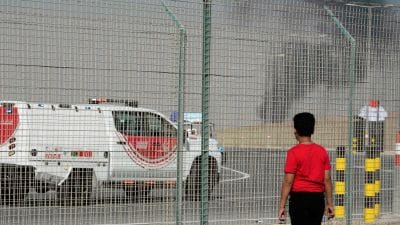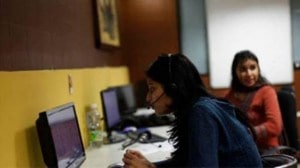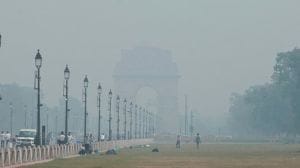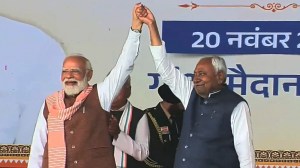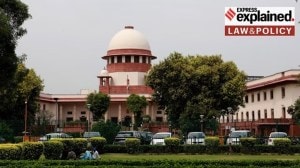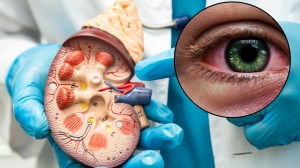Priya Kumari Shukla is a Senior Copy Editor in the Indian Express (digital). She contributes to the UPSC Section of Indian Express (digital) and started niche initiatives such as UPSC Key, UPSC Ethics Simplified, and The 360° UPSC Debate. The UPSC Key aims to assist students and aspirants in their preparation for the Civil Services and other competitive examinations. It provides valuable guidance on effective strategies for reading and comprehending newspaper content. The 360° UPSC Debate tackles a topic from all perspectives after sorting through various publications. The chosen framework for the discussion is structured in a manner that encompasses both the arguments in favour and against the topic, ensuring comprehensive coverage of many perspectives. Prior to her involvement with the Indian Express, she had affiliations with a non-governmental organisation (NGO) as well as several coaching and edutech enterprises. In her prior professional experience, she was responsible for creating and refining material in various domains, including article composition and voiceover video production. She has written in-house books on many subjects, including modern India, ancient Indian history, internal security, international relations, and the Indian economy. She has more than eight years of expertise in the field of content writing. Priya holds a Master's degree in Electronic Science from the University of Pune as well as an Executive Programme in Public Policy and Management (EPPPM) from the esteemed Indian Institute of Management Calcutta, widely recognised as one of the most prestigious business schools in India. She is also an alumni of Jamia Milia Islamia University Residential Coaching Academy (RCA). Priya has made diligent efforts to engage in research endeavours, acquiring the necessary skills to effectively examine and synthesise facts and empirical evidence prior to presenting their perspective. Priya demonstrates a strong passion for reading, particularly in the genres of classical Hindi, English, Maithili, and Marathi novels and novellas. Additionally, she possessed the distinction of being a cricket player at the national level. Qualification, Degrees / other achievements: Master's degree in Electronic Science from University of Pune and Executive Programme in Public Policy and Management (EPPPM) from Indian Institute of Management Calcutta ... Read More
UPSC Key—28 August, 2023: Ethical use of AI, Basic Structure of the Constitution and El Niño Impacts
Exclusive for Subscribers from Monday to Friday: Have you ever thought about how Artificial Intelligence, Dengue Vaccines and BRICS leaders’ summit in Johannesburg are relevant to the UPSC Exam? What significance do topics like Global Governance of outer space, Basic features of the doctrine of basic structure, Tiranga, Jawahar Sthal and Shiv Shakti have for both the preliminary and main exams? You can learn more by reading the Indian Express UPSC Key for August 28, 2023.
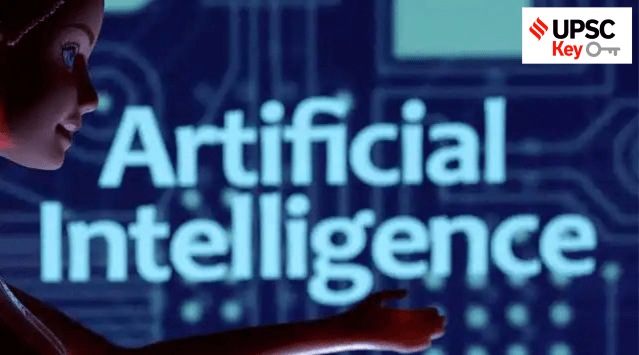 UPSC Key August 2023: Here's what you should be reading from the August 28, 2023 edition of The Indian Express (Reuters)
UPSC Key August 2023: Here's what you should be reading from the August 28, 2023 edition of The Indian Express (Reuters)Important topics and their relevance in UPSC CSE exam for August 28, 2023. If you missed the August 25, 2023 UPSC CSE exam key from the Indian Express, read it here
FRONT PAGE
Create global framework for ethical use of AI: PM
Syllabus:
Preliminary Examination: Current events of national and international importance.
Mains Examination: General Studies III: Awareness in the fields of IT, Space, Computers, robotics, nano-technology, bio-technology and issues relating to intellectual property rights.
Key Points to Ponder:
• What’s the ongoing story- PRIME MINISTER Narendra Modi on Sunday called for a global framework to ensure the ethical use of artificial intelligence (AI) as he flagged concerns over algorithmic bias and its disruptive impact on society. Emphasising the need to deepen mutual trust and cooperation between countries, Modi called for a similar, integrated approach to deal with issues related to cryptocurrencies.
• What is artificial intelligence (AI)?
• How is artificial intelligence (AI) currently governed?
• NITI Aayog and National Strategy for AI and the Responsible AI for All report-Know in detail
• What are the use of AI in different areas?
• Is Artificial Intelligence a Human-stein Monster?
• ‘AI is not intelligence and idea that AI will replace human intelligence is unlikely’-Comment
• Why AI regulation is needed?
• If Regulated then what should be the limit?
• If regulated, then what are the risks associated with regulating AI?
• What has been India’s Response to demands for AI Regulation?
Other Important Articles Covering the same topic:
📍The 360° UPSC Debate: Should Artificial Intelligence Be Regulated?
GOVT & POLITICS
Ukraine ‘conflict’, India’s UNSC aspirations in BRICS declaration, no mention of Afghanistan
Syllabus:
Preliminary Examination: Current events of national and international importance.
Mains Examination: General Studies II: Bilateral, regional and global groupings and agreements involving India and/or affecting India’s interests.
Key Points to Ponder:
• What’s the ongoing story- Afghanistan is missing from the BRICS declaration, but the document mentioned the “legitimate” aspirations of India, Brazil and South Africa to be part of the UN Security Council, acknowledged G20 as a premier multilateral forum and called the Russia-Ukraine war a “conflict” this time instead of “situation”.
• What are the key takeaways from the BRICS leaders’ summit in Johannesburg?
• Key takeaways from the BRICS leaders’ summit in Johannesburg-On UN Security Council reforms, the BRICS declaration introduced the phrase “legitimate aspirations” and the word “democratic” in the paragraph. Last year, BRICS had merely talked about “aspirations” of India, Brazil and South Africa and making the UNSC “representative, effective and efficient”.
On the issue of the Russia-Ukraine war, the BRICS declaration used the word “conflict in and around Ukraine”, instead of last year’s formulation of the “situation in Ukraine” . Afghanistan was a noteworthy miss in the 94-paragraph declaration running into 17 pages, especially considering that there was an extensive paragraph on it in the June 2022 declaration. BRICS — largely portrayed as an anti-West platform — acknowledged G20 as a “premier multilateral forum” and the “Indian Presidency” this time. It helped that two more BRICS countries — Brazil and South Africa — will preside over the G20 in 2024 and 2025, respectively. India’s proposal of disaster-resilient infrastructure was in the declaration as well. “We reiterate the importance of BRICS cooperation in the field of disaster management. We stress the importance of disaster risk reduction measures towards building resilient communities and the exchange of information on best practices, adoption of climate change adaptation initiatives, and integration of indigenous knowledge systems and improving investments in early warning systems and disaster resilient infrastructure.” The BRICS decided to expand the membership from five to 11, but they also decided not to tinker with the name.
• Quick Recall-Leaders of the BRICS — Brazil, Russia, India, China and South Africa — decided to expand the grouping and admit six new members. Saudi Arabia, Iran, UAE, Egypt, Ethiopia and Argentina will become part of BRICS with effect from January 1, 2024.
• Map Work-Saudi Arabia, Iran, UAE, Egypt, Ethiopia and Argentina
• How the decision on the new members was agreed upon?
• What are the parameters utilised for the induction of new members into the BRICS Grouping?
• For Your Information-At a joint media briefing in Johannesburg, South African President and Summit host Cyril Ramaphosa, along with Prime Minister Narendra Modi, Chinese President Xi Jinping and Brazilian President Luiz Inacio Lula da Silva, said, “We have consensus on the first phase of this BRICS expansion process… We have decided to invite Argentina, Egypt, Ethiopia, Iran, Saudi Arabia and the United Arab Emirates to become full members of BRICS.”
“We value the interests of other countries in building partnership with BRICS and have tasked our Foreign Ministers to further develop the BRICS partnership model and list of prospective countries (which want to join the grouping),” Ramaphosa said.
He said the decision on the new members was agreed upon after firming up the guiding principles, criteria and procedure for the expansion process. There are about 23 countries which have formally applied so far for membership of the grouping.
• How this expansion will make BRICS stronger and more effective?
• For Your Information-The BRICS, in its declaration, said, “We have decided to invite the Argentine Republic, the Arab Republic of Egypt, the Federal Democratic Republic of Ethiopia, the Islamic Republic of Iran, the Kingdom of Saudi Arabia and the United Arab Emirates to become full members of BRICS from 1 January 2024.” The grouping was formed in September 2006 and it originally comprised Brazil, Russia, India and China (BRIC). It was renamed as BRICS after South Africa was accepted as a full member in September 2010. At present, the BRICS represents 41 per cent of the global population, 24 per cent of the global GDP and 16 per cent of the global trade.
• What is the significance of the 15th BRICS summit?
• What are the potential benefits or advantages for India in this context?
• What BRICS expansion means for India?
• BRICS — largely portrayed as an anti-West platform?
Other Important Articles Covering the same topic:
📍BRICS gets six new members: Significance, what it means for India
No row over Chandrayaan-3 landing site naming: Somanath
Syllabus:
Preliminary Examination: Current events of national and international importance.
Mains Examination: General Studies III: Achievements of Indians in science & technology; indigenization of technology and developing new technology.
Key Points to Ponder:
• What’s the ongoing story-ISRO chairman S Somanath on Sunday said the space agency has got critical and interesting data from the Chandrayan-3 mission, which would be explained in the coming days. Addressing the media, Somanath said there is no controversy regarding the Prime Minister naming the Chandrayaan-3 landing site as ‘Shiv Shakti point’.
“The rover is moving as planned. We have been getting very interesting data from the rover which was never obtained in the past. Scientists will explain it in the coming days,’’ he said.
• Who names points on its surface and how is this done?
• What is Tiranga, Jawahar Sthal and Shiv Shakti?
• Why no one can own the Moon?
• “Great power rivalry on the Earth has inevitably begun to envelop the Moon”-Discuss and attest with some examples
• “With outer space and the Moon set for an increased range of activity, Delhi needs laws – domestic as well as international – for its effective promotion and regulation”-What’s your opinion?
• “This is a moment to seize the new possibilities for India’s leadership in transforming the relationship between humanity and outer space”-Discuss
• What is Indian Space policy 2023?
• Is space governed by international law?
• Global Governance of outer space is very much required now?
• What is Moon Agreement of 1979?
• For Your Information-In 1966, the United Nations Office for Outer Space Affairs came out with the Outer Space Treaty. Notably, this was during the Cold War era, when the two superpowers, the USSR and the United States, were locked in a rivalry. This manifested in an arms race (over military supremacy), economic competition and the Space race. Here, both were eager to accomplish firsts – the first man on the Moon, the first astronauts to be sent to Space, etc. Setting some common principles for space exploration, the Treaty said in its Article II: “Outer space, including the moon and other celestial bodies, is not subject to national appropriation by claim of sovereignty, by means of use or occupation, or by any other means.” Simply, this meant countries had to cooperate in their Space exploration activities and could not stake a claim to the Moon. Alexander Soucek, head of public international law at the European Space Agency, said in a DW report, “A nation can plant a flag on the moon, but it doesn’t have any legal meaning or consequence…” However, the Treaty does not talk about naming sites on the Moon.
• Who names landing sites on the Moon, then?
• What is International Astronomical Union (IAU)
• How does IAU consider names for planetary objects?
• Are there any norms for naming Space objects?
• Has India ever named any other site on the Moon?
• Chandrayaan-3 and geopolitical stature of India-Comment
• There will be other tangible benefits from the success of Chandrayaan-3-what kind of benefits?
• The Indian Space Research Organisation-Know about ISRO
Other Important Articles Covering the same topic:
📍‘Shiv Shakti’, ‘Tiranga’, ‘Jawahar Sthal’ after Chandrayaan missions: Who names sites on the Moon?
Previous year UPSC Mains Question Covering similar theme:
📍India has achieved remarkable successes in unmanned space missions including the Chandrayaan and Mars Orbiter Mission, but has not ventured into manned space missions, both in terms of technology and logistics? Explain critically (UPSC GS3, 2017)
📍Discuss India’s achievements in the field of Space Science and Technology. How the application of this technology has helped India in its socio-economic development? (UPSC GS3, 2016)
THE IDEAS PAGE
Syllabus:
Preliminary Examination: Indian Polity and Governance-Constitution, Political System, Panchayati Raj, Public Policy, Rights Issues, etc.
Mains Examination: General Studies II: Indian Constitution—historical underpinnings, evolution, features, amendments, significant provisions and basic structure.
Key Points to Ponder:
• What’s the ongoing story-Subrata Mitra writes: Does a free nation have the right to shape its present and determine its future, unhindered by some “universal” values of external provenance, and unshackle itself from the “mind-forged manacles” of received ideas? The debate, which had raised great passions in 1951 during the discussion on the First Amendment of the Constitution has now been resuscitated by the assertion of Ranjan Gogoi that the “Basic Structure Doctrine” has “a very debatable jurisprudential basis”.
• “The Basic Structure Doctrine has a very debatable jurisprudential basis”-Why this particular sentence is in news?
• First of all, what is Doctrine of the ‘basic structure’?
• How has the doctrine of basic structure evolved?
• What are the basic features of the doctrine of basic structure?
• What power is granted by Article 368 of the Indian Constitution?
• Shankari Prasad case (1951), Golak Nath case (1967), Kesavananda Bharati case (1973), Indira Nehru Gandhi case (1975), Minerva Mills case (1980), Waman Rao case (1981) and the evolution of basic Structure of the Constitution-connect the dots
• For Your Information-The Basic Structure Doctrine emerged from the Kesavananda Bharati judgment of the Supreme Court, delivered by a majority of 7:6 on April 24, 1973. It held that Parliament could not alter the basic structure of the Constitution by an amendment. There is no exclusive and definitive list of what the basic features are, for the judiciary decides this on a case-by-case basis. In consequence, as cases accumulate, the list of areas off-limits to the executive gets longer. This creates a peculiar political environment where frenzied elections generate tall mandates that are undeliverable. The executive remains hamstrung, constrained not just by limited material resources but bound by limited and uncertain legal room to manoeuvre. The consequence of this gap between parliamentary competence and executive impotence knocks the wind out of the power and capacity of electoral democracy. The political culture it breeds is known as “cheap talk” in game theory, seen in such emphatic gestures as grandstanding and heady rhetoric followed by inaction, empty rhetoric and costless, non-binding, unverifiable communication between politicians and the electorate. The Basic Structure Doctrine puts “procedure established by law” below “due process” in the functioning of the legislative process. Its political profiling as “sacrosanct” puts it beyond the ken of politics. In 1951, right at the outset of post-colonial India’s journey into uncharted territory, no less a democrat than Prime Minister Jawaharlal Nehru had taken the bold step to initiate the process to restrict the freedom of speech and expression and got Parliament to pass the First Amendment. In retrospect, one is grateful for his boldness and sagacity in undertaking the necessary changes in the core principles of the Constitution for the validation of zamindari abolition laws and provisions that stipulated that the right to equality does not bar the enactment of laws that provide special considerations for underprivileged sections of society. Article 368 of the Constitution clearly stipulates that “Parliament may in exercise of its constituent power amend by way of addition, variation or repeal any provision of this Constitution in accordance with the procedure laid down in this article.”
• Can Parliament change the basic structure doctrine of the Indian Constitution?
• Why is the doctrine criticised?
Other Important Articles Covering the same topic:
📍V-P Jagdeep Dhankhar sparks debate with remarks on Basic Structure of Constitution; what is it?
Previous year UPSC Prelims Question Covering similar theme:
📍 Consider the following statements: (UPSC GS1, 2020)
1. The Constitution of India defines its ‘basic structure’ in terms of federalism, secularism, fundamental rights and democracy.
2. The Constitution of India provides for ‘judicial review’ to safeguard the citizens’ liberties and to preserve the ideals on which the Constitution is based.
Which of the statements given above is/are correct?
(a) 1 only
(b) 2 only
(c) Both 1 and 2
(d) Neither 1 nor 2
Previous year UPSC Mains Question Covering similar theme:
📍 “Parliament’s power to amend the constitution is limited power and it cannot be enlarged into absolute power”. In light of this statement, explain whether parliament under article 368 of the constitution can destroy the basic structure of the constitution by expanding its amending power? (UPSC GS2, 2019)
EXPLAINED
Dengue vaccines under development in India: a status report
Syllabus:
Preliminary Examination: Economic and Social Development-Sustainable Development, Poverty, Inclusion, Demographics, Social Sector Initiatives, etc.
Main Examination: General Studies II: Issues relating to development and management of Social Sector/Services relating to Health, Education, Human Resources.
Key Points to Ponder:
• What’s the ongoing story-With the expanding geography of dengue infections — in India as well as the world — an increasing need has been felt for an effective vaccine that can protect against all four serotypes. Nearly half the population of the world lives at risk of the disease at present. The disease in India has spread from just eight states and union territories in 2001 to all states by 2022 — Ladakh was the last bastion from where two infections were reported last year. There have been 31,464 cases and 36 deaths due to dengue reported across the country till the end of July this year, as per the latest available data. There are several efforts ongoing within the country to develop an effective vaccine against the mosquito-borne disease that can lead to internal bleeding, circulatory shock, and death.
• What is Dengue?
• Which virus causes dengue?
• Indian Council of Medical Research-Know in detail
• Why it is spreading in India
• For Your Information-Dengue is expanding its footprint across the country over the last two decades due to climate change, increased urbanisation with temperature-controlled environment, and rapid urbanisation leading to shortage of utilities such as running water.
• Is there any vaccine for dengue in India?
• Do You Know-First, a vaccine developed by Panacea Biotec based on live weakened versions of the four dengue serotypes developed by the National Institute of Allergy and Infectious Diseases in the United States. The US laboratory developed weakened versions of all four dengue virus serotypes — they deleted parts of the genetic code of DENV1, DENV3, and DENV4 serotypes of the virus to do so and then genetically engineered DENV2 backbone using parts from weakened DENV 4 on which the others were tacked on. These were grown in cell culture by Panacea Biotec to develop the vaccine.
The company has already completed a phase I/II study in 100 healthy adults between 18 and 60 years of age. This showed that there were no severe adverse events and more than 75% of the participants developed antibodies against all four of the dengue serotypes.
A larger phase III trial is likely by December this year after they scale up their manufacturing capability. The trial will be conducted across 20 sites in the country enrolling 10,335 healthy adults between the ages of 18 and 80 years.
A second vaccine candidate was developed by the Serum Institute of India with the same weakened virus from the United States. A phase I trial with 60 healthy adults of 18 to 45 years has already been completed, showing the vaccine to be safe and well tolerated. After phase 2, the company with ICMR will conduct a large-scale study with the help of ICMR in children between the ages of 2 to 18 years.
The same technology has also been used by Indian Immunologicals Limited to develop a vaccine that has started the phase I clinical trial in 90 persons between the ages of 18 and 50 years.
• Are there any indigenous vaccines against dengue?
• What is Dengvaxia?
• What do you understand by the DNA Vaccines?
• For Your Information-There are at least two indigenous vaccines against dengue under development in research institutes. Both have used similar ideas to come up with different types of vaccines. One of the main challenges of developing a dengue vaccine is antibody-dependent enhancement (ADE) — a person with low levels of antibodies against one serotype of dengue, may end up getting a more severe infection with another serotype of dengue. This was what led to controversy surrounding the first dengue vaccine to be approved. Only after a vaccination programme had been rolled out in the Philippines, it was found that the vaccine could actually increase the risk of severe disease in people who had not been infected before. To do away with this problem, both the Indian research teams selected a specific part of the envelop protein known to not cause ADE. The team from the International Centre for Genetic Engineering and Biotechnology (ICGEB) created a Virus-Like Particle using these parts of the virus. The vaccines were shown to offer almost 100% protection against all four serotypes. This has been tested in mice and monkeys but is yet to be tested in humans. The vaccine was developed in collaboration with Sun Pharmaceuticals. The other team from Tata Institute of Fundamental Research and Rajiv Gandhi Centre for Biotechnology among other institutes again used the same envelope parts of the four dengue virus along with another part called non-structural-1 and constructed a genetic sequence out of it. This resulted in a DNA vaccine with all four serotypes. Although DNA vaccines can be manufactured at lower safety levels, at a lesser cost, and can be stored even at room temperatures, they don’t always produce a very good immune response. This is the reason most DNA vaccine candidates failed until the success of the Zydus COVID-19 vaccine. The researchers are currently optimising the vaccine using nano-plasmids. The vaccine candidate has already been tested on mice.
Other Important Articles Covering the same topic:
📍Dengue on steady rise, ICMR set to conduct vaccine trial
Previous year UPSC Prelims question covering same theme:
📍In the context of vaccines manufactured to prevent the COVID-19 pandemic, consider the following statements: (UPSC Prelims GS1, 2022)
1. The Serum Institute of India produced a COVID-19 vaccine named Covishield using an mRNA platform.
2. The Sputnik V vaccine is manufactured using a vector-based platform.
3. COVAXIN is an inactivated pathogen-based vaccine.
Which of the statements given above is correct?
a. 1 and 2 only
b. 2 and 3 only
c. 1 and 3 only
d. 1, 2 and 3
📍With reference to recent developments regarding ‘Recombinant vector Vaccines’, consider the following statements: (UPSC Prelims GS1, 2021)
1. Genetic engineering is applied in the development of these vaccines.
2. Bacteria and viruses are used as vectors.
Which of the statements given above is/are correct?
a. 1 only
b. 2 only
c. Both 1 and 2
d. Neither 1 nor 2
Syllabus:
Preliminary Examination: Indian and World Geography-Physical, Social, Economic Geography of India and the World.
Mains Examination:
• General Studies I: Important Geophysical phenomena such as earthquakes, Tsunami, Volcanic activity, cyclone etc., geographical features and their location-changes in critical geographical features and in flora and fauna and the effects of such changes.
• General Studies III: Indian Economy and issues relating to planning, mobilization, of resources, growth, development and employment and Major crops-cropping patterns in various parts of the country
Key Points to Ponder:
• What’s the ongoing story-It’s clear that El Niño is now emerging as a major economic as well as political risk in India, ahead of national elections scheduled in April-May 2024.
The effects of the abnormal warming of the central and eastern equatorial Pacific Ocean waters towards Ecuador and Peru – generally known to suppress rain in India – are already beginning to be felt. August so far has seen the country as a whole register 30.7% below-normal (i.e. the historical long-period average for a given interval) rainfall. As a result, the overall 4.2% surplus during the first two months of the southwest monsoon season (June-September) has turned into a cumulative 7.6% deficit as of August 27. The India Meteorological Department anticipates no significant monsoon revival during the next five days, putting this month on course to end up as the driest ever August – even surpassing that of 1965 and 1920.
• What is El Nino?
• Why is called El Nino?
• What is El Nino effect in India?
• During El Niño, trade winds weaken or stronger than usual?
• What are the conditions which causes El Niño?
• EL Nino Southern Oscillation or ENSO impact on Monsoon?
• How El Niño Impacts-Know Sector and region wise
• But why have El Niño conditions continued for three years?
• What is Inter Tropical Convergence Zone?
• Impact of Monsoons on Life in India-Economical, Cultural and Social
• Why things can worsen?
• What that can do
• Do You Know-The southwest monsoon rain is crucial for not just the kharif season crops, mostly sown in June-July and harvested over September-October. It is required also to fill up dam reservoirs and recharge groundwater tables that, in turn, provide water for the crops cultivated during the rabi (winter-spring) season.
The rabi crops are mainly wheat, mustard, chana (chickpea), masur (red lentil), matar (field pea), barley, potato, onion, garlic, jeera (cumin), dhaniya (coriander) and saunf (fennel). They also include maize grown in Bihar and rice in West Bengal, Assam, Telangana, Andhra Pradesh, Tamil Nadu, Karnataka, Odisha and Chhattisgarh.
 Chart 1.
Chart 1.
The chart above shows water levels in 146 major reservoirs as on August 24 to be 21.4% lower than a year ago and 6.1% below the last 10 years average for this date. The area sown under most kharif crops this time, barring pulses such as arhar (pigeon pea) and urad (black gram), has been higher compared to last year, thanks to the 12.6% rainfall surplus in July that made up for the monsoon’s late onset and 10.1% deficit in June.
The dry weather in August can affect yields of the already-planted crops now in vegetative growth stage. But farmers may still be able to salvage these with one more shower or even the available moisture. The real issue would be not with the kharif, but the upcoming rabi season crops that are largely dependent on water in the underground aquifers and reservoirs. That’s where El Niño’s impact might be most felt.
• How El Nino can damage Indian economy?
Other Important Articles Covering the same topic:
4 ASTRONAUTS FROM 4 NATIONS REACH ISS: THE CREW, THE MISSION
Syllabus:
Preliminary Examination: Current events of national and international importance.
Mains Examination: General Studies III: Awareness in the fields of IT, Space, Computers, robotics, nano-technology, bio-technology and issues relating to intellectual property rights.
Key Points to Ponder:
• What’s the ongoing story-Four astronauts from four countries, including the US, Denmark, Japan, and Russia, launched aboard a SpaceX rocket towards the International Space Station (ISS) from NASA’s Kennedy Space Center in Florida on Saturday (August 26). This was the first US take-off in which all the astronauts atop the spacecraft belonged to a different country — until now, NASA had always included two or three of its own on its SpaceX flights.
• What is Crew-7?
• Who are the astronauts going to the International Space Station (ISS)?
• What is International Space Station are there in the world?
• How many International Space Station are there in the world?
• Why has such a diverse group of astronauts gone to ISS?
• What is the mission?
• For Your Information- The Crew-7 is the eighth flight operated by NASA and Elon Musk-owned SpaceX as part of the agency’s commercial crew program, which has been taking astronauts to the ISS since SpaceX’s first crewed mission in 2020.
During their stay at the space station, the Crew-7 astronauts will conduct more than 200 science experiments and technology demonstrations to prepare for missions to the Moon, Mars, and beyond. The research will include a collection of microbial samples from the exterior of the space station. The team will also analyse how sleeping in the microgravity environment differs from Earth by examining astronauts’ brain waves while they sleep.
“Yet another experiment will look at the formation of biofilms in wastewater on the space station, which could be key to finding better ways to recycle water for drinking and hygiene while in space (Yes, astronauts have long used recycled sweat and urine to drink and shower on the station)”, CNN reported.
Other Important Articles Covering the same topic:
📍New crew for the space station launches with 4 astronauts from 4 countries
For any queries and feedback, contact priya.shukla@indianexpress.com
The Indian Express UPSC Hub is now on Telegram. Click here to join our channel and stay updated with the latest Updates.
Subscribe to our UPSC newsletter and stay updated with the news cues from the past week.
UPSC Magazine
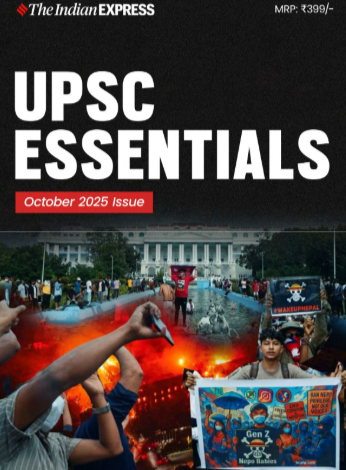
Read UPSC Magazine



- 01
- 02
- 03
- 04
- 05



